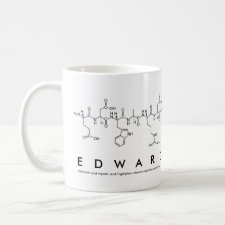
Authors: Alsudir S, Iqbal Z, Lai EPC
Article Title: Competitive CE-UV binding tests for selective recognition of bisphenol A by molecularly imprinted polymer particles.
Publication date: 2012
Journal: Electrophoresis
Volume: 33
Issue: (8)
Page numbers: 1255-1262.
DOI: 10.1002/elps.201100706
Abstract: Capillary electrophoresis with ultraviolet detection (CE-UV) was used to perform competitive binding tests to demonstrate the selective recognition of bisphenol A (BPA) by molecularly imprinted polymer (MIP) particles. Cross-linking polymerization of methacrylic acid (MAA) and ethylene glycol dimethacrylate (EGDMA) in the presence of BPA yielded MIP particles with an average diameter of 164 ± 15 nm. Their ability to recognize BPA in the presence of nonionic, anionic, and cationic water contaminants was investigated. Binding efficiency was rapidly determined, after sequential injection of particles first and compounds next into the fused-silica capillary provided a short overlapping time during their electrophoretic migrations. The MIP particles exhibited high-binding efficiency (99 ± 1%) for BPA. Neither diclofenac nor metformin affected BPA binding, and 2-hydroxy-4-methoxybenzophenone was even displaced from the particles by BPA. These results verified the high selectivity of MIP toward its target compound
Template and target information: bisphenol A, BPA
Author keywords: bisphenol A, capillary electrophoresis, Competitive binding, molecularly imprinted polymer, particles, selectivity



Join the Society for Molecular Imprinting

New items RSS feed
Sign-up for e-mail updates:
Choose between receiving an occasional newsletter or more frequent e-mail alerts.
Click here to go to the sign-up page.
Is your name elemental or peptidic? Enter your name and find out by clicking either of the buttons below!
Other products you may like:
 MIPdatabase
MIPdatabase









